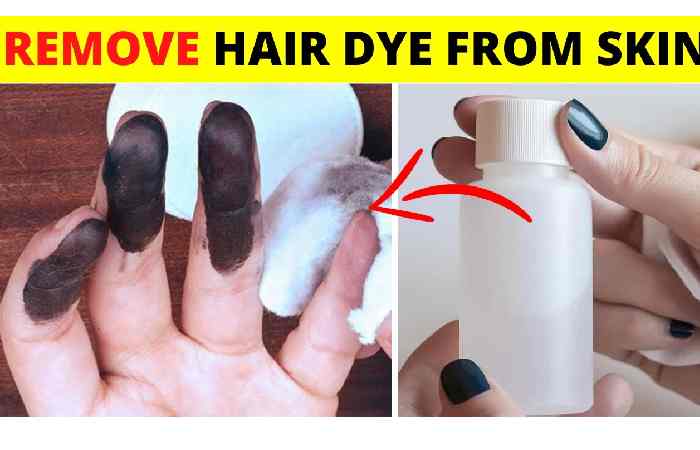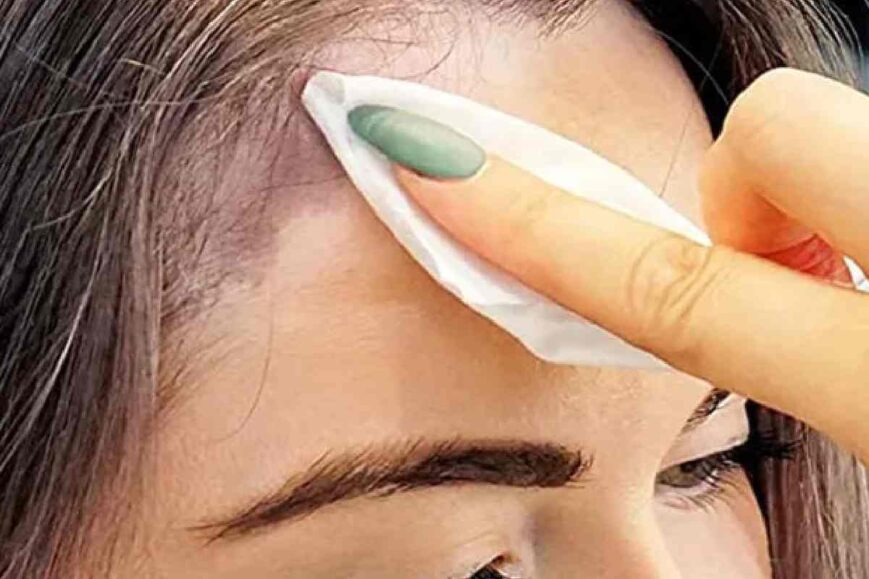How to Get Hair Dye Off Skin? – Getting hair dye can be a great, fun, and economical way of changing your appearance, but it commonly goes with an inevitable nuisance: hair dye stains on the skin. Those bright stripey stains are annoying to get off, be it smears on your forehead, some permed stubborn stain of hairline, or some blot on your hands. Good news? It does not require harsh chemicals and costly products to turn your skin natural again.
Why Does Hair Dye Stain Skin?
The hair dyes include pigments intended to adhere to the hair but can bind themselves to your skin, at least when you do not wash them as soon as possible. The longer the dye is left, the more it can penetrate and the harder it becomes to get out. Such body parts as hairline, ears, and hands are likely to be stained as they are frequently exposed when people dye their hair. Unlike professional salons, which put a barrier cream or petroleum jelly on hair so it is not discolored, at-home dye jobs may not take precautions so that you can end up with colorful reminders of your do-it-yourself experience.
Before diving into the solutions, here’s a quick tip: Always do a patch test with any method to ensure your skin doesn’t react negatively, especially if you have sensitive skin. Also, act fast—fresh stains are much easier to remove than ones set for hours or days.
1. Soap and Water: The First Line of Defense

The easiest and most direct way is to clean the stained spot using soap and water. A liquid or dish soap is appropriate, especially a mild bar of soap, which is more effective in cutting the oil from the dye than bar soap. Dampen a washcloth or wash your hands thoroughly, then apply a large quantity of soap and circularly rub the stained parts. Wash and repeat.
It is optimal that you do this as quickly as possible after you realize that those dyes are on your skin, preferably before drying it. In case of failure, proceed to any of the more focused techniques mentioned below.
2. Baking Soda: A Gentle Exfoliant
Baking soda, found in every household, is a mild abrasive and a good means of removing hair dye. A tablespoon of baking soda and a couple of drops of orange juice make a pasty mixture. Put the paste on the strained area and rub it in a circular motion using your fingers or a soft cloth. The grainy consistency is suitable for lifting the dye and is not too hard on your skin.
Permit scrubbing for approximately one minute and then rinse in warm water. When the stain is difficult to crack, include dish soap in the paste to give it more strength when cleaning. Care should be taken not to rub too hard since baking soda may cause sensitive skin to dry out.
3. Olive Oil: A Nourishing Stain Remover
Olive oil has more uses than just cooking because it is non-problematic to the skin and is a mild method of stripping hair dye. Its oils can also disintegrate the pigment of dye, particularly in fragile body parts like the face or neck. Heat a little olive oil (one teaspoon) in your hands or even in the microwave for a few seconds so it is warm but not hot. Rub it over the stained region within 1-2 mins so the oil can infiltrate through the dye.
Clean the oil using a damp cloth and scrub the spot with soap and water afterward. This technique has a perfect sensitivity on the skin and can hydrate your skin.
4. Toothpaste: An Unexpected Ally
Hair dye stains can be a wonder for non-gel toothpaste, especially those containing baking soda. Its chemical structure and slight abrasive agent assist in removing pigmentation on the skin. Blot a little toothpaste onto the stain and then rub it in with a finger or a soft toothbrush (softer than your regular toothbrush, please!). Apply small, round movements to prevent irritations.
Wash several times in warm water. Comparatively, toothpaste is handy for removing small and stubborn spots around nails or cuticles. Do not apply this on delicate parts of the skin, such as around the eye, as it irritates.
5. Rubbing Alcohol: A Powerful Option
An easy-go-to is rubbed alcohol (isopropyl alcohol) in handling hard stains. It dissolves the dye / separates the chemical bonds of the dye, and it becomes easy to wipe. Place a cotton ball or pad into liquid alcohol and then rub the stained place carefully. For stubborn stains, you can apply little force. When the dye is lifting, wash the region with soap and water to eliminate all traces of alcohol.
Remember, as it may dry, you can rub it on rubbing alcohol, but follow up with a moisturizer. It cannot be applied on damaged or irritated skin, or it is stinging.
6. Nail Polish Remover: For Stubborn Stains
Nail polish remover (acetone-based) is a stronger option for persistent stains, but it should be used sparingly and with caution. Dab a small amount onto a cotton ball and gently swipe it over the stain. Work quickly to avoid prolonged exposure, as acetone can be harsh and dry. Rinse immediately with soap and water, then apply a moisturizer to soothe the skin.
This method is best for hands or nails, not for sensitive areas like the face. Always do a patch test first.
Conclusion
The stains left after using hair dyes on your skin should not spoil your attempt to do hair coloring yourself. With these 10 deer alternatives included under natural and accessible methods such as soap and water to petroleum jelly, there is an upper hand to effectively remove stains and not cause any damage to your skin. Use olive oil or baking soda and move to stronger ones such as rubbing alcohol or nail polish remover. A patch test and then moisturizing should always be the concern of skin protection.


